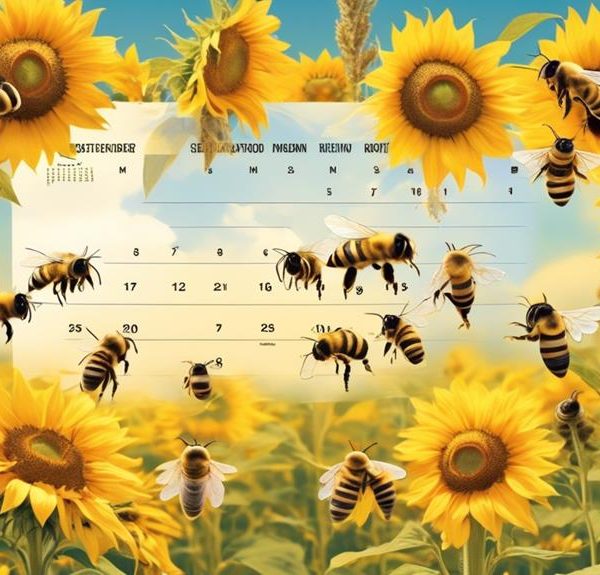Yearning to understand why bee stingers are curved? Dive into the intriguing world of bee anatomy and survival tactics to find out.
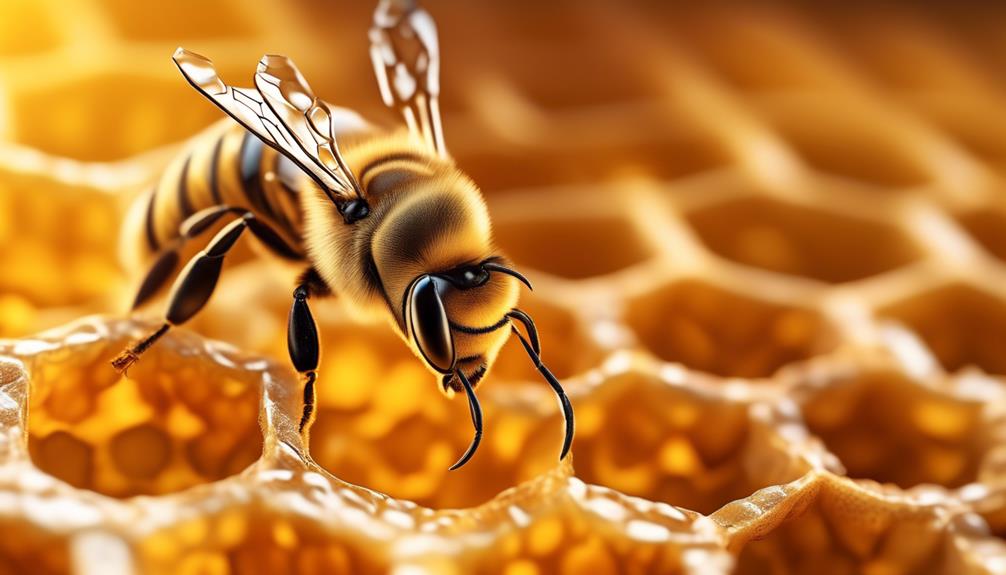
Why Are Bee Stingers Curved
Imagine you're gardening on a sunny day and accidentally disturb a bee; it gets defensive and stings you.
You've probably noticed the bee's stinger left behind, and you may have observed it's not straight but curved.
You might wonder, why is that? What's the purpose behind this twist in nature's design?
The answers to these questions lie in the fascinating world of bee anatomy and their survival tactics.
So, let's explore this further and uncover the reasons why bee stingers are curved, not straight.
Key Takeaways
- Bee stingers are curved as a result of evolutionary adaptation and serve multiple functions, including defense and reproduction.
- The curvature of bee stingers allows them to anchor into victims and continue pumping venom, even after the bee is removed.
- Stinger curvature influences the survival and behavior of different bee species, increasing their chances of warding off threats but often leading to the death of the bee.
- Honeybees commonly have curved stingers that are barbed, maximizing venom delivery but resulting in the death of the bee, while many solitary bee species have straight stingers that allow for repeated stinging without harm.
Understanding Bee Anatomy
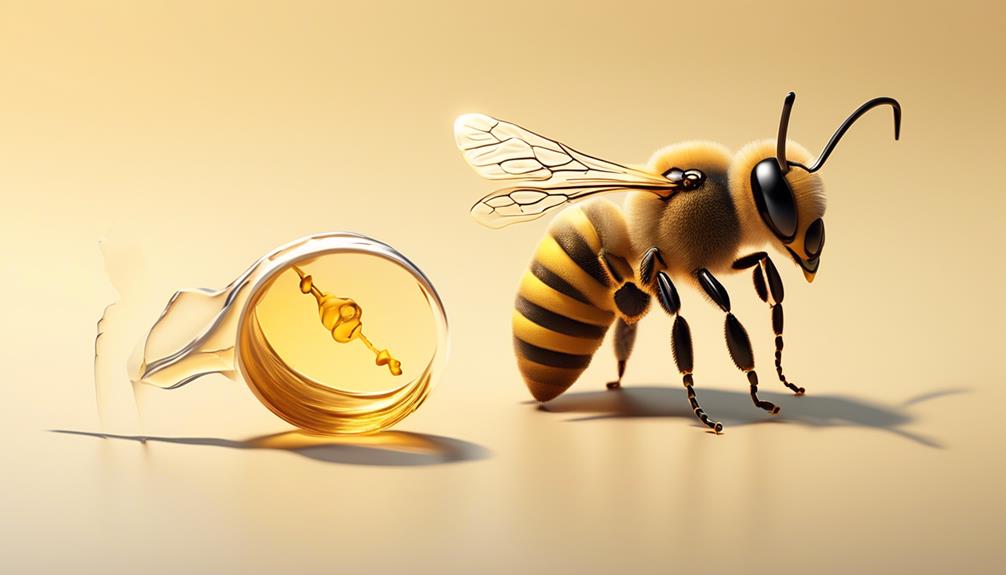
Delving into the intricacies of bee anatomy, you'll find it's a rich tapestry of specialized parts, each playing a pivotal role in the bee's survival and overall functionality of the hive. You might think a bee's body is simple, but it's a complex, well-organized system, each component crucial to the bee's existence.
Consider the bee's stinger, a subject of much scientific curiosity. It's not just a weapon, but a multifunctional tool. The stinger, or sting, is a modified ovipositor. It's not present in males, but in females, it plays a vital role in laying eggs and in defense. The stinger's curve, contrary to popular belief, isn't a design flaw but a result of evolution, enhancing the bee's defensive capabilities.
Then there's the bee's antennae, sensory organs that detect vibrations and odors. They're vital for communication, navigation, and finding food. Additionally, the antenna serves as a bee's 'nose,' detecting pheromones that regulate hive behavior.
The bee's wings, too, deserve mention. They're not just for flying, but also help regulate temperature within the hive. Understanding the anatomy of these industrious creatures gives us insights into their behavior, survival strategies, and their crucial role in our ecosystem.
The Role of Bee Stingers
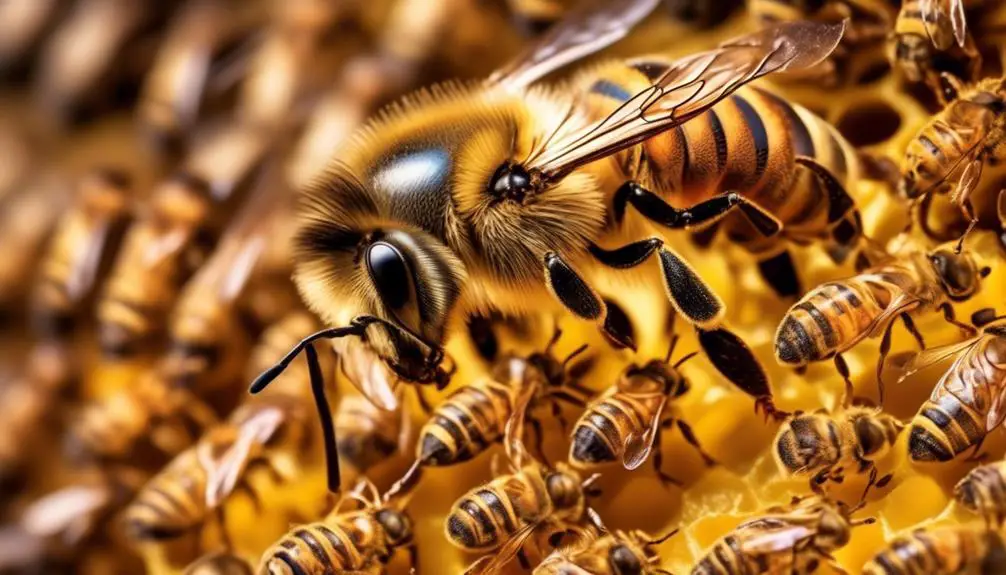
Building on our understanding of bee anatomy, let's now focus on the role of bee stingers, a critical part of their defense mechanism and reproduction system.
As you might know, only female bees, both worker bees and queens, possess stingers. This tool serves two key functions.
First, let's talk defense. When threatened, bees release a pheromone that attracts other bees to join in protection. Here's where the stinger comes into play. It's their primary weapon, designed to inflict pain and deter predators. The stinger is barbed, and for honey bees, it's a one-time use weapon. This is because the stinger, along with part of the bee's digestive tract, remains in the predator, causing the bee's eventual death.
The second role is in reproduction. Queen bees use their stingers to eliminate rivals. Unlike worker bees, the queen's stinger is smooth, allowing her to sting multiple times without causing her own death. This function ensures she remains the sole reproducer in the hive.
Clearly, bee stingers aren't simply an appendage; they're essential for both survival and continuation of the bee species.
The Science Behind Curved Stingers
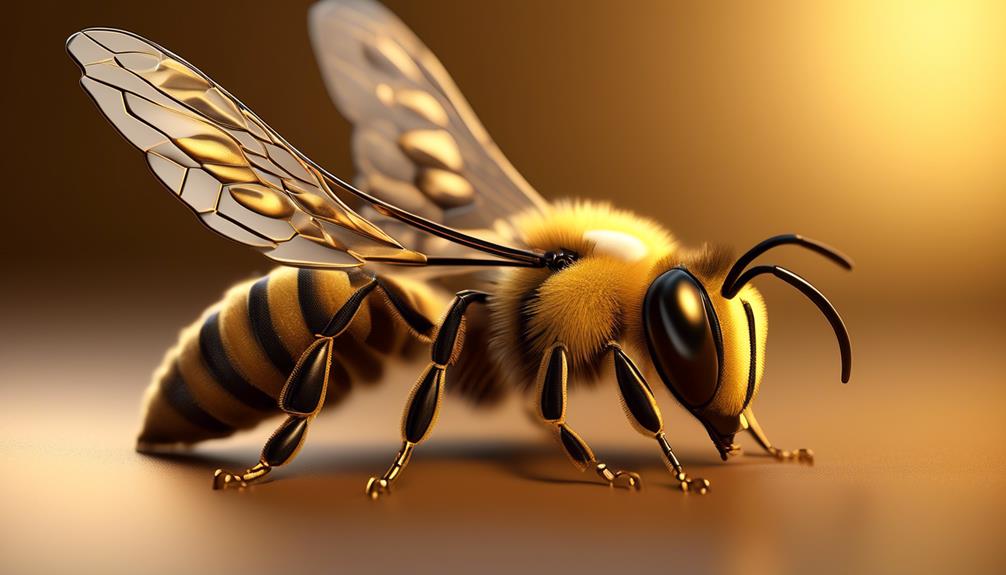
You might be wondering why some bee stingers are curved while others are straight – it's all rooted in the fascinating science of bee anatomy and evolution. The curvature of a bee's stinger is a direct consequence of its intended purpose. Typically, worker bees, the bees that protect the hive, have curved stingers designed for multiple uses.
Now, let's get into the nitty-gritty. The curved stinger is the result of a remarkable evolutionary adaptation. When a bee stings, it's not just injecting venom – it's also lodging its stinger into the perceived threat. The curve in the stinger helps it to anchor into the victim, making it difficult to remove.
In the grand scheme of bee evolution, this design is ingenious. It ensures that the stinger stays in place, continuously pumping venom even if the bee itself is squashed or swatted away. However, this comes at a cost. The stinger is attached to the bee's digestive tract, so when it stings, it's a one-way trip.
Survival Impact of Stinger Curvature
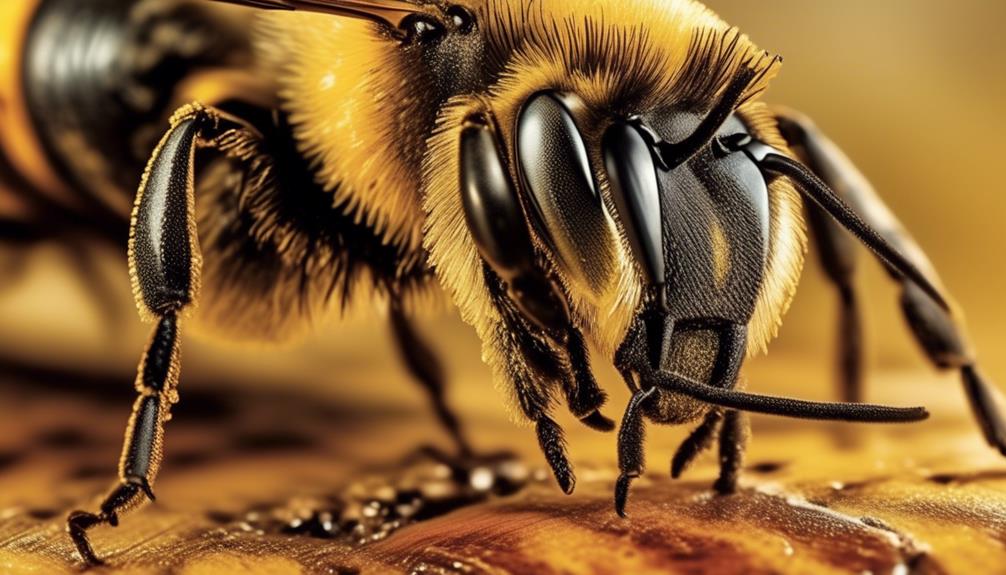
Understanding the survival impact of stinger curvature involves looking at how this evolutionary adaptation has influenced the survival and behavior of different bee species. The curvature of a bee's stinger, you must realize, isn't just a random feature; it's a strategic adaptation that allows the bee to defend itself more effectively.
When a bee stings, it's often a last resort, because for many species, stinging can lead to their death. The curved stinger helps to lodge it deeper in the victim, thereby delivering more venom. This increases the bee's chances of warding off potential threats. However, the stinger's barbs, which are aided by the curvature, often get stuck, causing the stinger, along with part of the bee's abdomen, to rip away and ultimately kill the bee.
Stinger curvature can also affect a bee's behavior. Honey bees, for example, are more likely to sting than solitary bees due to their curved, barbed stingers, and the need to protect their large colonies.
Curved Vs Straight Stingers: A Comparison
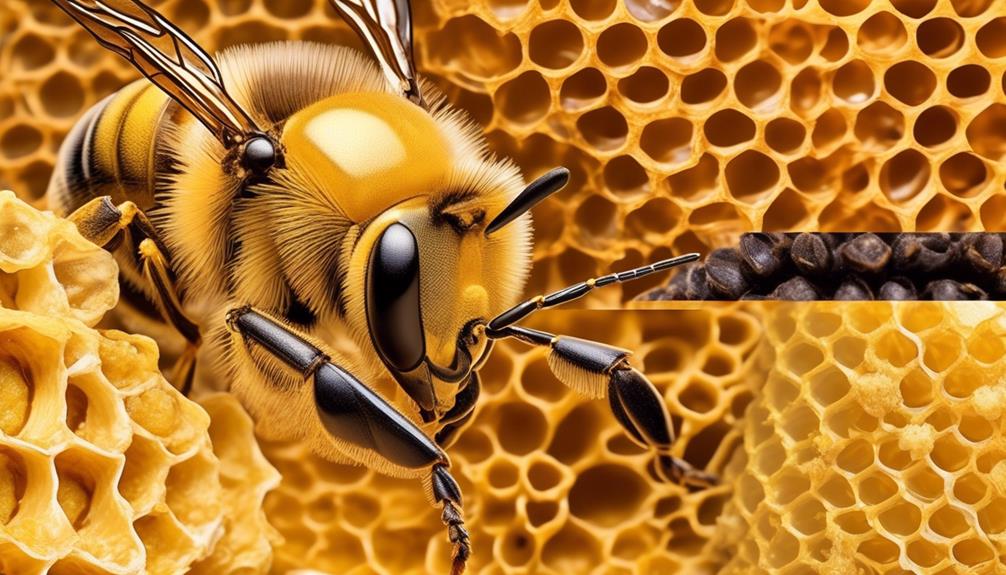
Let's dive into the differences between curved and straight stingers, examining how each type impacts the bee's defensive strategies, survival rates, and behavioral tendencies.
A bee's stinger is an evolutionary adaptation designed for defense. The curved stinger, commonly found in honeybees, is barbed and designed to remain in the attacker, detaching from the bee's abdomen. This strategy maximizes venom delivery but often results in the bee's death, a sacrificial move for the colony's protection.
On the other hand, you'll find straight stingers on many solitary bee species. They're smooth and non-barbed, enabling the bee to sting repeatedly without harm to itself. This mechanism is beneficial for solitary bees, as their survival is vital for reproduction and species continuity.
Comparatively, the curved stinger's one-time use appears disadvantageous. But consider the honeybee's social structure. In a large colony, individual survival is less critical than the group's safety. The straight stinger may seem superior for individual survival, but it delivers less venom per sting, potentially reducing its defensive effectiveness.
Frequently Asked Questions
What Other Insects Have Curved Stingers Besides Bees?
Besides bees, you'll find that wasps and hornets also have curved stingers. This curvature isn't just for show; it's a critical part of their defense mechanism. The curve helps the stinger penetrate skin more easily and deeply, delivering a more effective dose of venom.
How Do Bees Actually Use Their Stingers in Defensive Situations?
When bees feel threatened, they use their curved stingers as a defense mechanism. You'll notice that the stinger pierces the threat's skin, delivering venom. The stinger's curved shape aids in deeper penetration, ensuring effective toxin delivery.
But there's a catch. Once a bee stings, it can't retrieve its stinger, resulting in the bee's death. It's a sacrificial act, but crucial for the protection of the hive.
Are There Any Medical Implications for Humans Stung by Bees?
Yes, there are medical implications if you're stung by a bee. Typically, you'll experience sharp pain, redness, and swelling.
However, if you're allergic, a sting can trigger a life-threatening reaction called anaphylaxis, which requires immediate medical attention.
Additionally, bee stingers inject venom that can cause localized tissue damage. It's crucial to remove the stinger promptly to minimize venom delivery and reduce these effects.
What Is the Process of a Bee Developing Its Stinger Like?
As a bee grows, its stinger develops in stages. First, it's just a tiny nub, but over time, it elongates and curves. This shape isn't accidental. It's designed for maximum impact.
When you're stung, the curved stinger hooks into your skin, making it harder to remove. The bee's venom sac, attached to the stinger, continues to pump venom even after detachment.
It's a clever, if painful, defense mechanism.
Can a Bee Still Survive After It Has Used Its Stinger?
No, typically a bee can't survive after using its stinger. When a bee stings, its stinger, which is barbed, gets lodged into the skin of its victim. This causes the bee's abdomen to rupture when it pulls away, leading to its death.
This self-sacrificing act is a last-ditch effort to protect the hive. It's a striking example of the extreme lengths nature will go to ensure the survival of a species.
Conclusion
In summary, the curvature of a bee's stinger is no mere coincidence. It's a vital part of their defence mechanism, significantly boosting their survival rate. The curve facilitates deeper penetration and better venom delivery, compared to straight stingers.
So, it's not just a sting; it's a well-engineered tool, honed by evolution over millions of years. Now that's something to appreciate, next time a bee buzzes past you!


